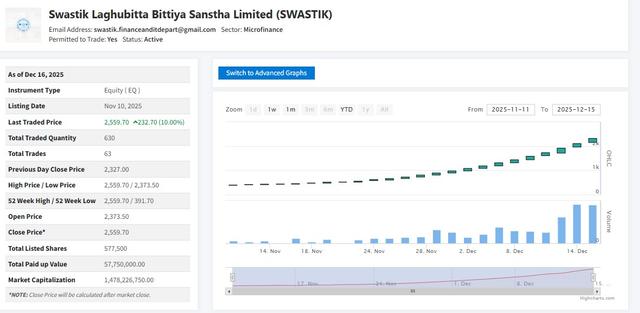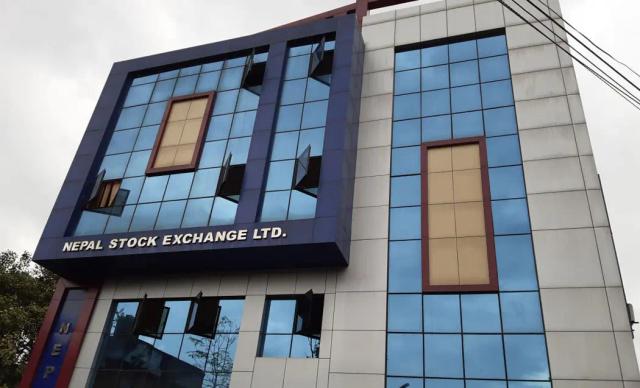The Cause of NEPSE's Downturn: Maha Prasad Adhikari's Controversial Policies (2020-2025)
Author
Nepsetrading

Maha Prasad Adhikari’s tenure as the Governor of the Nepal Rastra Bank (NRB) from 2020 to 2025 was marked by a series of bold policy decisions aimed at stabilizing Nepal’s financial system and addressing macroeconomic challenges. However, these policies had a profound and often polarizing impact on the Nepal Stock Exchange (NEPSE), leaving a mixed legacy of short-term setbacks and occasional relief for investors. While some measures were designed to instill financial discipline and curb speculative excesses, others inadvertently deepened the bearish trends and stagnation in the stock market. On the other hand, a few proactive steps provided temporary boosts, offering hope to market participants. Here’s a detailed analysis of how Adhikari’s policies shaped NEPSE’s trajectory during his tenure.
Policies That Weighed Heavily on NEPSE
Margin Lending Cap (2021-2024)
In 2021, the NRB imposed a cap on margin lending, limiting it to Rs 120 million. This move was intended to curb excessive speculation and reduce systemic risks in the stock market. However, it had an immediate and severe impact on NEPSE. The index, which had peaked at 3227 points in 2021, plummeted by 44% in the following months. The cap stifled market recovery and led to a sharp decline in trading volumes, which dropped from Rs 20 billion daily in 2021 to a mere Rs 2 billion by 2023. This policy was widely criticized for choking liquidity and discouraging retail investors.Luxury Import Ban (2022-2023)
The extension of the luxury import ban in 2022, aimed at conserving foreign exchange reserves, had unintended consequences for NEPSE. Import-reliant sectors such as automobiles, electronics, and luxury goods saw their revenues plummet, dragging down their stock prices. By mid-2023, NEPSE had fallen below 2000 points, erasing Rs 200 billion in market capitalization. The ban exacerbated the market’s bearish sentiment, as investors lost confidence in sectors heavily dependent on imports.Higher CRR and SLR (2021-2022)
In a bid to tighten liquidity and control inflation, the NRB raised the Cash Reserve Ratio (CRR) to 4% and tightened the Statutory Liquidity Ratio (SLR) in 2021. While these measures were effective in curbing inflation, they significantly reduced the lending capacity of banks. With less capital available for investment, NEPSE experienced a sharp decline, falling from 2818 points in August 2021 to below 2000 points by mid-2022. The policy was seen as overly restrictive, particularly for a market already struggling with low investor confidence.Strict Working Capital Rules (2022)
In 2022, the NRB introduced stricter working capital rules, limiting loans to 75% of a company’s working capital needs. This move was intended to promote financial discipline among businesses but ended up crippling the cash flow of many listed companies. As a result, NEPSE dropped from 2100 points in early 2022 to 1850 points by October 2022. The policy was particularly damaging to small and medium-sized enterprises (SMEs), which rely heavily on bank financing.Delayed Forex Response (2022-2023)
The NRB’s slow response to the declining foreign exchange reserves, which fell to $9.5 billion by July 2022, prolonged economic uncertainty. This delay in addressing the forex crisis kept NEPSE under pressure, with the index struggling to stay above 2000 points. By December 2022, NEPSE had hit a low of 1790 points, reflecting the market’s lack of confidence in the central bank’s ability to manage the crisis.Interest Rate Ceiling on Fixed Deposits (2021)
In 2021, the NRB imposed a ceiling on fixed deposit interest rates to control competition among banks. While this move aimed to stabilize the banking sector, it reduced returns for investors, prompting many to shift their capital away from equities. This contributed to NEPSE’s decline from over 3000 points in mid-2021 to 2500 points by the end of the year.Restrictive Hydropower Financing Rules (2022)
Hydropower is a key sector in NEPSE, and the NRB’s decision to tighten lending norms for hydropower projects in 2022 had a significant impact. The new rules made it harder for companies to secure financing, dampening investor sentiment and causing the sector’s stocks to underperform. As a result, NEPSE fell from 2200 points in early 2022 to 1900 points by mid-year.Overregulation of Microfinance (2023)
In 2023, the NRB imposed stricter capital and lending rules on microfinance institutions (MFIs). While intended to strengthen the sector, the overregulation caused listed MFI stocks to falter. NEPSE, which had been hovering around 2100 points in mid-2023, dropped to 1931 points by September 2023.
Policies That Provided Relief to NEPSE
Cautiously Accommodative Monetary Policy (2024)
In a significant shift, the NRB adopted a cautiously accommodative monetary policy in 2024, relaxing credit rules and targeting 12.5% credit growth. This move sparked a 4.4% surge in NEPSE on July 28, 2024, with banking stocks leading the rally. The policy was seen as a much-needed boost for the market, which had been struggling for years.Digital Financial Services Push (2020-2024)
Throughout his tenure, Adhikari championed the adoption of digital financial services, including QR payments and Real-Time Gross Settlement (RTGS) systems. These initiatives improved the efficiency of banks and financial institutions, indirectly supporting NEPSE’s financial sector stability. The push for digitalization also helped attract younger investors to the stock market, contributing to periodic upticks in trading activity.Lower Policy Rates (2023)
In a bid to spur economic growth, the NRB reduced policy rates in 2023. This move injected liquidity into the market and boosted investor confidence. NEPSE responded positively, rising from 1808 points in May 2023 to 2244 points by July 2023. The rate cut was widely applauded as a timely intervention to revive the struggling market.
Conclusion: A Mixed Legacy
Maha Prasad Adhikari’s tenure as NRB Governor was characterized by a series of bold but often controversial policies that left a lasting impact on NEPSE. While his efforts to instill financial discipline and address macroeconomic challenges were commendable, many of his measures inadvertently deepened the stock market’s bearish trends and volatility. On the other hand, his proactive steps in 2023 and 2024 provided much-needed relief, offering hope to investors and market participants.
As of February 23, 2025, NEPSE remains a reflection of this mixed legacy—struggling to regain its former glory but buoyed by occasional policy-driven rallies. The lessons from Adhikari’s tenure underscore the delicate balance between financial regulation and market growth, a challenge that will continue to shape Nepal’s economic landscape in the years to come.



